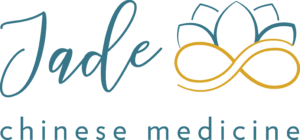Cupping
Cupping therapy is a form of traditional medicine that originated in China and West Asia. People have practiced this method for thousands of years. However, many cultures practice cupping – hieroglyphics inside the pyramids also show cupping being practiced!
Cupping therapy is an ancient healing technique that Chinese medicine practitioners often use to relieve pain. Cupping is generally performed to dispel stagnation (stagnant blood and lymph), thereby improving Qi and blood flow to facilitate healing. Cupping uses suction to draw blood to or away from specific areas of your body.
The benefits of cupping are not actually ‘skin deep’, but rather extend up for four inches into the body.
Cupping can provide both physical and mental benefits including:
- Cupping brings the body’s blood closer to the skin’s surface, which is thought to increase circulation generally.
- Removing stagnant blood around restricted muscles, treating muscle spasms and pain, and mproving range of movement and functional ability
- Tight, painful muscles are loosened during cupping, helping to promote healing and relaxation of muscle fibres.
- Scar tissue and adhesions after surgery can be painful as the tightened tissue pulls during movement. Cupping can help to soften these connective tissues and make them more flexible and pliable, reducing pain.
- Cupping helps to move lymph fluid through the body more effectively, bolstering and strengthening the immune system. Cupping activates the lymphatic and peripheral nervous systems.
- Cupping is also traditionally used for respiratory ailments such as colds, asthma, allergies, or bronchitis.
Where the cup is placed on the skin, the suction lifts the fascia away from the muscle, gently separating the tissue. The suction also brings cellular hydration and increased blood flow to body tissues and drains excess fluids and toxins by clearing lymphatic pathways and encouraging (a vital part of the immune system).
Suction from cupping draws fluid into the treated area. This suction force expands and breaks open tiny blood vessels (capillaries) under your skin. Your body replenishes the cupped areas with healthier blood flow and stimulates proper and normal healing at a cellular level. Because of this effect, some people think that cupping releases toxins.
The increased blood flow brings oxygen and nutrients, encouraging lengthening and elasticity of muscles and fascia and therefore often providing pain relief from muscle tension.
Cupping therapy is very versatile and can be modified to achieve a variety of results using techniques ranging from subtle lymphatic drainage to deep tissue release.
What should I expect after cupping?
The suction force from cupping breaks open tiny blood vessels called capillaries under your skin. You may have red, round cupping therapy marks that should fade in a week or two. Although these marks will look like bruises, they’re not true bruises that injure muscle fibres.
Does cupping hurt?
Cupping shouldn’t cause pain, though you may experience some skin tightness during the procedure. After cupping therapy, you may feel bruised and slightly sore, but you shouldn’t have severe discomfort.
During a cupping treatment, there is a release of endogenous opioid-like endorphins which create a relaxed and euphoric feeling also lowering the nervous system response to pain.

